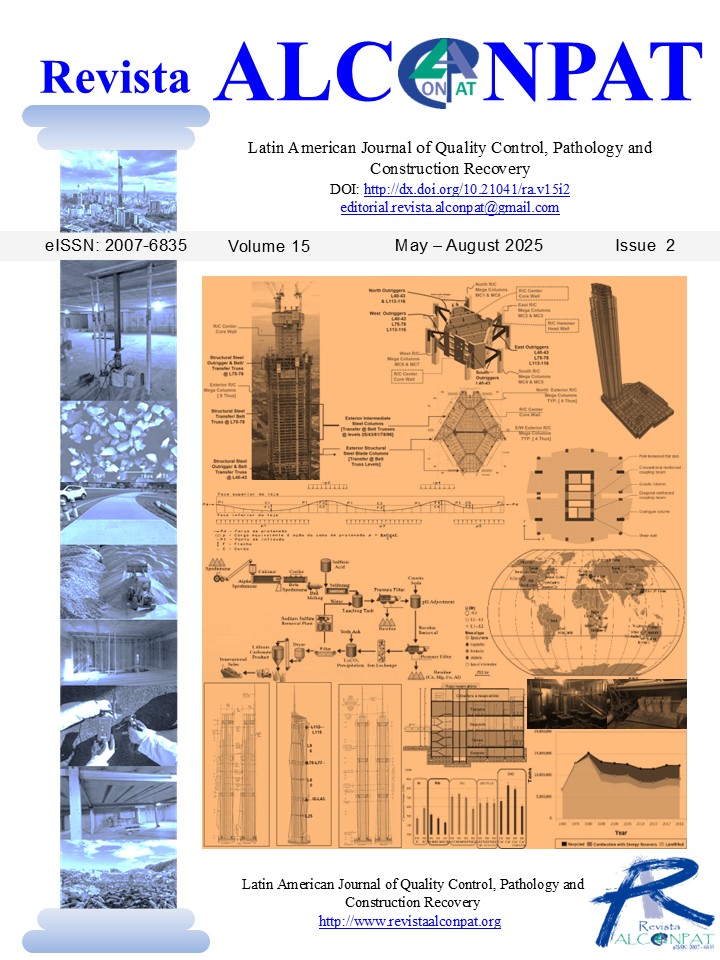Decarbonization strategies for the global cement and concrete industry. Highlighting the role of chemical admixtures for successful transition
DOI:
https://doi.org/10.21041/ra.v15i2.819Keywords:
CO2 emission, carbon capture and storage (CCS), calcined clay, slag, policarboxylic ether (PCE) superplasticizerAbstract
The objective of this paper is to present the two main possibilities for reducing the CO2 footprint of cement via clinker substitution using supplementary cementitious materials (SCMs) or carbon capture&storage. Engineering properties of mortar prepared from binders holding SCMs indicate that substantial clinker replacement is possible, e.g. using calcined clay or slag. Yet, such comparable properties can only be achieved by applying suitable chemical admixtures (superplasticizers, accelerators, etc.). The second option, carbon capture and storage (CCS), allows us to maintain the current cement production processes, but it is expensive and significantly increases the price for cement. For widespread application of SCMs in cement, novel admixtures are compulsory to facilitate successful transition to low carbon binders. This paper compares both alternatives for CO2 reduction and suggests potential solutions for existing technology gaps.
Downloads
References
Avet, F., Snellings, R., Diaz, A. A., Haha, M. B., Scrivener, K. (2016) Development of a new rapid, relevant and reliable (R3) test method to evaluate the pozzolanic reactivity of calcined kaolinitic clays. Cement and Concrete Research, 85, 1-11,https://doi.org/10.1016/j.cemconres.2016.02.015. DOI: https://doi.org/10.1016/j.cemconres.2016.02.015
Chang, F.-Y., Wey, M.-Y. (2006), Comparison of the characteristics of bottom and fly ashes generated from various incineration processes. Journal of Hazardous Materials, 138(3), 594-603. https://doi.org/10.1016/j.jhazmat.2006.05.099 DOI: https://doi.org/10.1016/j.jhazmat.2006.05.099
Conte, T., Plank, J. (2019), Impact of molecular structure and composition of polycarboxylate comb polymers on the flow properties of alkali-activated slag. Cement and Concrete Research 116: 95-101. https://doi.org/10.1016/j.cemconres.2018.11.014
Gholipour, H. F., Arjomandi, A., Yam, S. (2022), Green property finance and CO2 emissions in the building industry. Global Finance Journal, 51, 100696. https://doi.org/10.1016/j.gfj.2021.100696
Lei, L., Chan, H. -K. (2020), Investigation into the molecular design and plasticizing effectiveness of HPEG-based polycarboxylate superplasticizers in alkali-activated slag. Cement and Concrete Research 136: 106150. https://doi.org/10.1016/j.cemconres.2020.106150
Li, R., Chen, W. -C., Lei, L., Plank, J. (2023), Dispersing Efficacy of Tailored IPEG PCEs in AAS Binders: Elucidating the Impact of PCE Molecular Weight. Industrial & Engineering Chemistry Research. https://doi.org/10.1021/acs.iecr.2c03820
Li, R., Lei, L., Sui, T., Plank, J. (2021), Approaches to achieve fluidity retention in low-carbon calcined clay blended cements. Journal of Cleaner Production, 311, 127770. https://doi.org/10.1016/j.jclepro.2021.127770
Marchetti, C. (1977), On geoengineering and the CO2 problem. Climate change, 1(1), 59 - 68. https://doi.org/10.1007/BF00162777 DOI: https://doi.org/10.1007/BF00162777
Möller, H. (2020), Möglichkeiten und Grenzen CO2-armer Zementproduktion. BETON, 10, 392–398.
Olsson, J., Bovet, N., Makovicky, E., Bechgaard, K., Balogh, Z., Stipp, S. L. S. (2012), Olivine reactivity with CO2 and H2O on a microscale: Implications for carbon sequestration. Geochimica et Cosmochimica Acta, Vol. 77, p. 86-97. https://doi.org/10.1016/j.gca.2011.11.001 DOI: https://doi.org/10.1016/j.gca.2011.11.001
Onan, D.D. (1984), Effects of Supercritical Carbon Dioxide on Well Cements. Permian Basin Oil & Gas Recovery Conference, Midland, Texas. March 8, 1984. SPE-12593. DOI: https://doi.org/10.2118/12593-MS
Plank, J. (2022), Cements for Carbon Capture Wells. ACS Symposium Series: “Energy transition – climate action and circularity”, 29 August 2022, Vol. 1412, Chapter 8, p. 369 – 410.
Plank, J., Zhang, L. (2023), Effectiveness of zwitterionic superplasticizers in Na2SO4-activated AAS binders. Unpublished work.
Senadheera, S. S., Gupta, S., Kua, H. W., Hou, D., Kim, S., Tsang, D. C.W., Ok, Y. S. (2023) Application of biochar in concrete – A review, Cement and Concrete Composites, 143, 105204.
https://doi.org/10.1016/j.cemconcomp.2023.105204.
Sugama, T., Carciello, N. R. (1992), Carbonation of hydrothermally treated phosphate-bonded calcium aluminate cements. Cement and Concrete Research, 22(5), p. 783-792. https://doi.org/10.1016/0008-8846(92)90102-2 DOI: https://doi.org/10.1016/0008-8846(92)90102-2
Yoshioka, K., Obata, D., Nanjo, H., Yokozeki, K., Torichigai, T., Morioka, M., Higuchi, T. (2013), New ecological concrete that reduces CO2 emissions below zero level - new method for CO2 capture and storage. Energy Procedia, 37, p. 6018-6025. https://doi.org/10.1016/j.egypro.2013.06.530 DOI: https://doi.org/10.1016/j.egypro.2013.06.530
Published
How to Cite
Issue
Section
License
_______________________________
License in effect from September 2020
You are free to:
- Share — copy and redistribute the material in any medium or format for any purpose, even commercially.
- Adapt — remix, transform, and build upon the material for any purpose, even commercially.
- The licensor cannot revoke these freedoms as long as you follow the license terms.
Under the following terms:
- Attribution — You must give appropriate credit , provide a link to the license, and indicate if changes were made . You may do so in any reasonable manner, but not in any way that suggests the licensor endorses you or your use.
- No additional restrictions — You may not apply legal terms or technological measures that legally restrict others from doing anything the license permits.
Notices:
You do not have to comply with the license for elements of the material in the public domain or where your use is permitted by an applicable exception or limitation .
No warranties are given. The license may not give you all of the permissions necessary for your intended use. For example, other rights such as publicity, privacy, or moral rights may limit how you use the material.





















.png)














